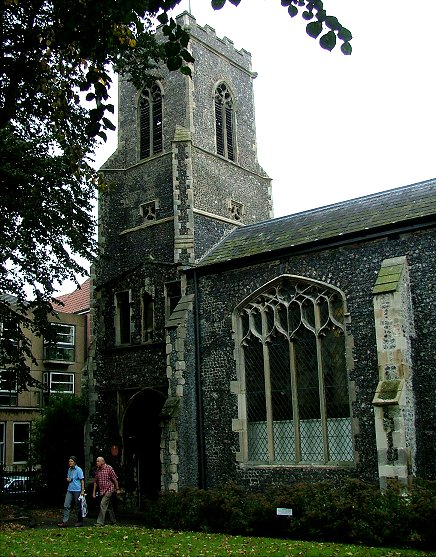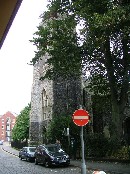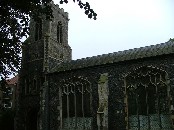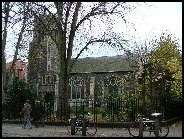| |
|
St
Margaret, Norwich
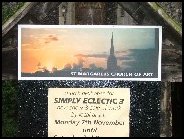 |
|
St
Benedict's Street has five medieval churches
along it, and they all have characters of their
own. Somewhat dwarfed by St Laurence a few metres
to the east, St Margaret is actually quite a
large church itself, a subtle building with
little of the in-yer-face triumphalism of its
Perpendicular neighbour. This isn't immediately
apparent from St Benedict's Street, thanks to the
large Perpendicular windows of the south aisle,
but when you look up at the elegant 14th century
tower and see the way that the aisle has been
built hard against the eastern wall of an earlier
two storey porch, you know that the aisle is an
interloper. |
As with St
Laurence, St Margaret was recommended for redundancy and
eventual demolition by the Brooke Report, the first of
these ensuing in 1975, by which time the report's plan to
demolish the churches and sell off their sites had been
defeated, largely by popular outcry. The city council had
wanted to wipe out the jumble of medieval and later
buildings that form the wedge between Westwick Street and
St Benedict's Street, and turn it into a really sexy
traffic junction - four lanes of cars and lorries coming
together from two different levels to be funnelled down
St Andrew's Street and into Bank Plain. Now, thirty years
later, we find it preferable to keep traffic out of our
cities, and it is salutary to think that we came close to
losing our heritage for a temporary town-planning
fashion.
| St
Margaret can seem a brooding building after dark,
set back as it is from the road, and so it is
pleasing to go inside and find that it is full of
light, during the day at least. For a few years
it was used as a gymnasium, but after lying empty
it is now an exhibition space, also used for
antiques fairs. George Plunkett's 1930s
image shows it as a typical urban town centre
church. As with most churches in this part of
Norwich, St Margaret lost all its Victorian glass
to German bombs, and had the good fortune, as at
St Martin Palace Plain, to have some good 1960s
glass installed in its stead. The east window is
a gorgeous abstract Ascension which I think may
be by Rosemary Rutherford, while the St Margaret
in the south aisle chapel by the Kings is more
conventional but equally beautiful.
|
|
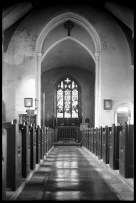 |
|
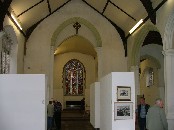 |
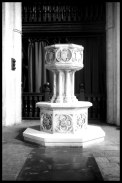 |
|
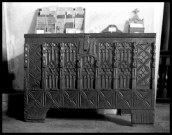 |
|
The font has now gone
(where?) but George Plunkett's 1930s phtograph
shows it as an elegant 14th century affair with
shields in quatrefoils on the bowl, and a
columned stem set on a large platform which has
roses set in quatrefoils. He also photographed a
squat little chest covered with carvings of
Decorated tracery, which I suspect may actually
have been Victorian. The south
chancel aisle probably predates the nave aisle,
since there is only narrow access to it from the
nave. In medieval days it was the chapel of St
Anne. Georgian fixtures and fittings are common
in Norwich, but all that survive here are the
massive casements to the north and south
doorways. Moses and Aaron flank the decalogue
board above that on the south side.
|
St
Margaret is a pleasant church to visit, if you can, as it
is not open except when there's something on. It seems
well suited to its modern usage, and we can only hope
that the funding is in place to secure it for the future.
Simon Knott, November 2005
|
|
|

